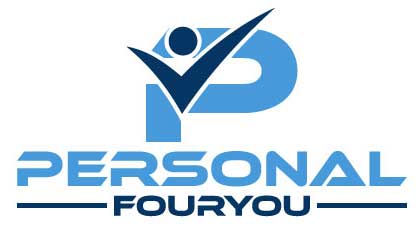
Fascia Board Repair
Eine Bewertung hinzufügen FolgeÜbersicht
-
Gründungsdatum Februar 20, 1948
-
Sektoren Trainee
-
Gepostete Jobs 0
-
Gesehen 78
Beschreibung des Unternehmens
Nine Things That Your Parent Taught You About Eaves Repair
Comprehensive Guide to Eaves Repair
Eaves play a vital role in securing homes from weather condition components, directing water runoff, and improving aesthetic appeal. Due to their prominent position, they are typically exposed to the components, leading to conditions that require repairs. This post details the value of eaves, common problems that arise concerning them, techniques for conducting repairs, and ideas for maintenance.
Value of Eaves
Eaves are the edges of the roof that extend over the walls of a building. Their primary functions consist of:
- Water Management: They direct rainwater away from the structure and avoid flooding.
- Defense from Weather Elements: Help avoid water infiltration, snow, and ice accumulation.
- Energy Efficiency: Properly developed eaves can minimize heating and cooling costs by controlling sunlight getting in through windows.
- Visual Appeal: They boost the architectural style of a building, adding character and style.
Typical Issues with Eaves
Eaves can face numerous issues due to their direct exposure to the elements. Here are some of the most regular problems:
| Problem | Description |
|---|---|
| Damage from Water | Disintegration, rot, or mold brought on by inadequate drainage. |
| Bug Infestations | Birds, insects, and rodents might discover shelter in eaves. |
| Structural Damage | Warped or cracked eaves can jeopardize roof integrity. |
| Missing/incomplete | Missing shingles or panels can expose the interior. |
| Fractures and Gaps | Allow water penetration and pest entry. |
Eaves Repair Methods
Fixing harmed eaves requires varying methods depending on the concern’s severity. Here’s a structured approach to eaves repair:
1. Evaluate the Damage
Before proceeding with any repairs, carrying out a comprehensive assessment is essential. Look for:
- Visible damage to the eaves.
- Indications of water damage on walls and foundations.
- Bug problems or nesting.
2. Collect Necessary Materials
Depending upon the repair needs, the following products may be required:
- Ladder
- Safety gear (gloves, safety glasses, mask)
- Replacement products (shingles, wood, etc)
- Caulk or sealant
- Paint (for aesthetic appeals)
3. Conduct the Repairs
The following are steps for typical repairs:
-
Replacing Damaged Sections:
- Cut away damaged parts of the eaves.
- Measure and cut replacement pieces to fit.
- Connect the new segments utilizing nails or screws.
-
Sealing Cracks and Gaps:
- Use caulk or sealant to fill gaps.
- Guarantee the area is tidy and dry before applying the sealant for reliable adhesion.
-
Reinforcing the Structure:
- If structural components are damaged, think about including support brackets or changing bigger sections of wood.
4. End up with Painting
After repairs, re-paint the eaves to safeguard the products from more degeneration and match them with the home’s exterior.
Preventive Maintenance Tips
To lengthen the lifespan of eaves and avoid comprehensive repairs, regular maintenance is required. Here are some proactive measures property owners can take:
- Regular Inspections: Conduct evaluations a minimum of two times a year to identify any emerging problems early.
- Tidy Gutters: Ensure rain gutters are devoid of debris to assist in appropriate water circulation.
- Trim Overhanging Branches: Prevent leaves and branches from collecting and causing water backups or damage.
- Pest Control: Regularly look for and remove insect infestations.
- Repaint Every Few Years: Protect wooden eaves by repainting or staining as required.
When to Call a Professional
While numerous house owners can manage minor repairs, some situations warrant professional assistance. Think about employing a professional if:
- The repair involves substantial structural damage.
- There are safety concerns, particularly when handling heights.
- Inadequate experience in repairs causes uncertainty about correct methods.
Often Asked Questions (FAQs)
Q1: How typically should I inspect my eaves?
A: It is suggested to inspect eaves a minimum of two times a year, preferably in spring and fall, to recognize possible issues.
Q2: What are the signs that my eaves require repair?
A: Signs consist of visible damage like cracks, sagging, peeling paint, water stains, and insect problems.
Q3: Can I repair my eaves myself?
A: Many small repairs can be done by property owners, however it’s essential to evaluate skill levels. For considerable repairs, working with a professional is a good idea.
Q4: How do I prevent eaves from ending up being harmed?
A: Regular maintenance, consisting of cleansing gutters, examining for damage, and securing against pests, can assist prevent eaves from degrading.

Q5: Are eaves repairs covered by house owners insurance?
A: Coverage can vary by policy. It’s important to talk to your insurance coverage provider relating to particular scenarios and protection types.
Eaves play a vital function in a home’s structural integrity and aesthetic appeal. Fixing and keeping them is necessary for protecting their performance and extending their life expectancy. With regular inspections and proactive care, homeowners can avoid minor concerns from escalating into more severe issues. Whether choosing DIY repairs or working with a professional, understanding eaves and their maintenance needs guarantees a safe, effective, and stunning living environment.


